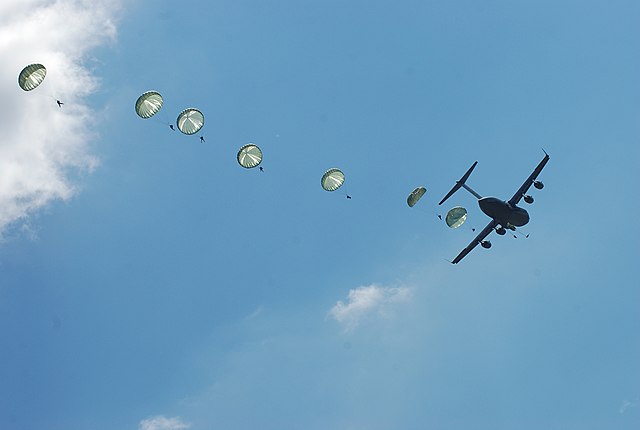In the year 808 in China, a priest called Qing Xuzi made the first definite reference to gunpowder in Taishang Shengzu Jindan Mijue. It would take nearly a century until, in 904, the black powder was first reportedly used during warfare.
In the year 1938, nuclear fission, the mechanism behind the atom bomb, was discovered by Otto Hahn and Fritz Strassman in Germany. It took just seven years before the first atom bomb was detonated.
The pace of innovation has not only continued but increased since the mid 20th century. This poses deep and often existential challenges for democracies, who must remain at the cutting edge of technological development and continually transform their arsenals if they hope to remain secure in an ever-changing world. In the School of International Relations, Dr Marc De Vore’s research continues to shed new light on overcoming these challenges, enhancing military preparedness and weapons acquisition programmes in democracies.
Despite the quick pace of development demanding that states continually reform their military reserves or risk being left behind, military organisations can often be highly resistant to change. De Vore’s research illuminates this conservative tendency and, just as importantly, offers solutions. His answer centres on organizational autonomy. Militaries often establish independent groups to explore new technologies and ideas. While this autonomy is initially useful, it leads the sub-units, such as independent services, branches, or units, to become powerful organisations within the bureaucracy that defend their advancements, even when they are superseded by newer ones.
De Vore’s research on the vulnerabilities that result from organizational resistance to change sparked an intense debate within the U.S. Army which ultimately led to concrete reforms, including the improved mobility and firepower of paratrooper units. The Army Times, widely subscribed to and read by army personnel, published an extended exposé and debate on the future of U.S. airborne forces, based on the findings of De Vore’s research. The result of these debates was a reassessment of US airborne forces and proposals for their modernisation. For example, analysts with think tank RAND cited De Vore’s findings on the unrealistically large size of airborne units, their extreme vulnerability to enemy fire, and their lack of ground mobility. They then proposed changing the role of airborne forces to focus on smaller-scale missions, while also equipping paratrooper units with armoured vehicles and light armour. The US Army ultimately adopted several of the proposed reforms, aligning closely with De Vore’s findings and suggestions. In 2018, for instance, the Army created a light armoured company within the 82nd Airborne Division, equipped with parachutable wheeled armoured vehicles. This represented an investment of over US$26 million in vehicle procurement alone.
De Vore’s research highlights a second issue with military preparedness, which is the vast imbalance in terms of global military spending. Famously, the military budgets of the US and China account for roughly half of the entire world’s defence spending. Countries with often vastly smaller defence budgets can find it increasingly difficult to keep pace with giants, such as the US, and the usual response is that they must either make do with outdated equipment, or join forces to collaborate with other relatively small states.
De Vore’s research suggests that this is a false – and a potentially dangerous – dichotomy. Weapons have become so complicated to manufacture that, admittedly, very few states can afford to do so on their own. However, giving up on a domestic defence industry entirely is also ill-advised. Domestic production is skilled and agile enough to quickly adapt weapons to unanticipated threats and manufacturing certain components domestically can protect existing advantages the state enjoys in that area. As a result, governments must strike a balance between domestic and international arms production to avoid the downsides of neglecting either one. They should also be flexible about how they weigh this balance, depending upon their own domestic strengths in military production.
This research has been particularly influential, including shaping how the South Korean government pursued its K-FX fighter jet programme. Combat aircraft are among the most sophisticated – and expensive – weapons currently produced. Historically, over 75% of combat aircraft development programmes have failed to produce functional aircraft for a globally competitive price. Despite these odds, the South Korean Air Force initially launched its estimated US$16 billion fighter jet programme—the largest armaments project ever undertaken in South Korea—with high ambitions for self- sufficiency and only one partner, Indonesia.
De Vore routinely participated in dialogues with Korean policymakers and Air Force officers on the difficulties of developing an indigenous fighter jet programme. Their engagements have been highly productive – consistent with De Vore’s research, Korea has begun actively pursuing many more global partnerships, either as full co-developers or to provide complex individual components. At the same time, to protect existing strengths and comparative advantages, Korea will focus on domestically developing important aspects of the flight control software and electronic systems.

